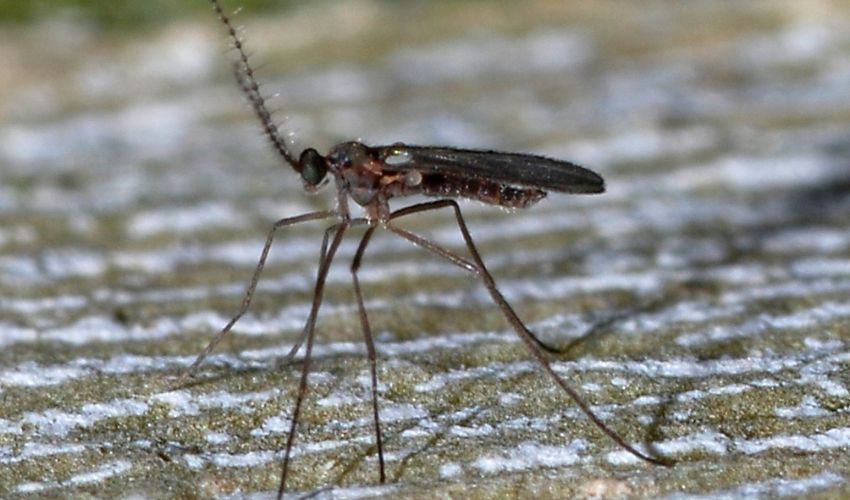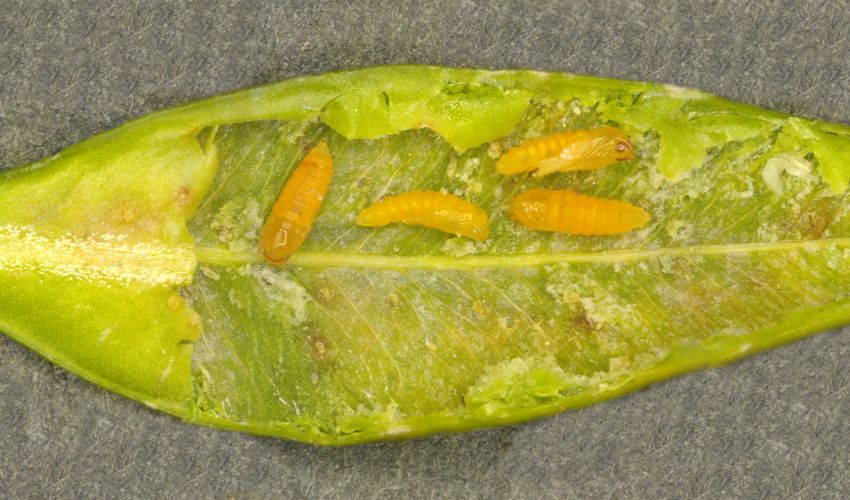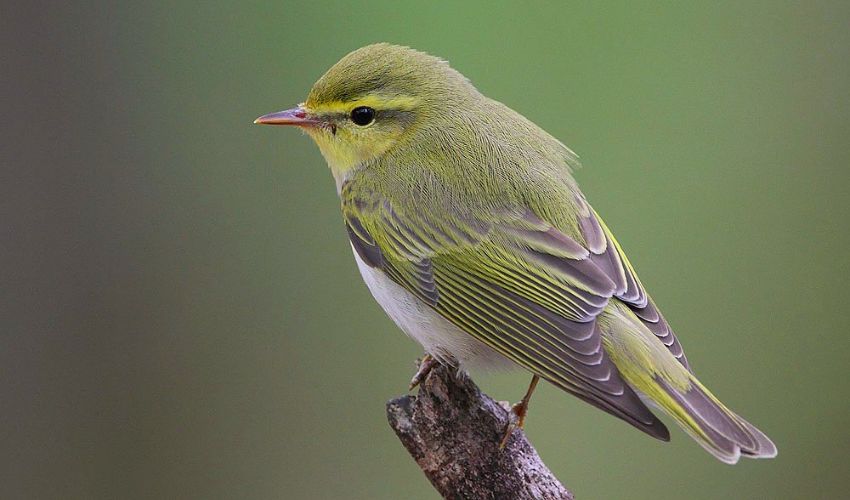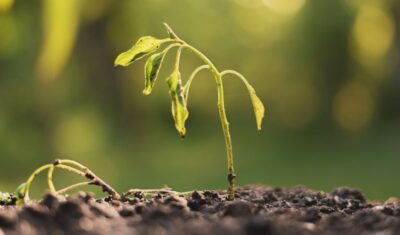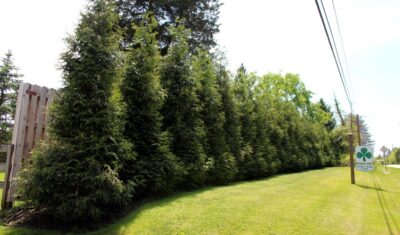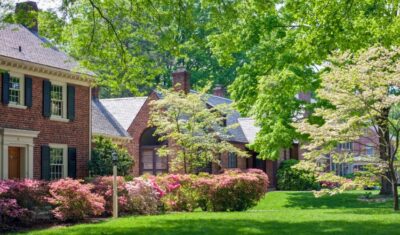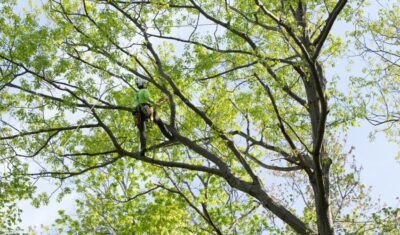What Are Boxwood Leafminers?
We look forward to new life emerging as spring begins after a long winter. Green leaves and blooming flowers are a beautiful reminder of the warm weather to come. However, in the case of the boxwood shrub, the warming spring season is when the boxwood leafminer makes itself known.
Introduced from its native Europe in the 1600s, the boxwood leaf miner wasn’t identified as a pest until the early 1900s. While this leafminer doesn’t cause significant damage in its native Europe, it is a prolific pest in North America, attacking boxwood shrubs from the Pacific to the Atlantic coasts.
What Do Boxwood Leafminers Look Like?
The boxwood leafminer (Monarthropalpus flavus) is an orange-red to yellow gnat-size fly whose larvae feed on and damage boxwoods every year. Adults are most easily observed in the summer, often seen in mosquito-like swarms among boxwood shrubs.
How Boxwood Leafminers Attack Your Plants
Boxwood leafminer damage is a result of the larvae feeding on the interior of the boxwood leaves. Adult female boxwood leafminers inject eggs through the underside leaf tissue using their ovipositor. Upon hatching from the egg, the larvae feed throughout the rest of the season, “mining” the interior of the leaves as they grow.
The boxwood leafminer larvae remain inside boxwood leaf layers, where they continue to develop and grow before entering a dormant phase lasting through the winter.
The mature adults emerge from boxwood leaves in the spring as temperatures rise. This process is most often observed in the mornings as the sun rises and shines on the boxwood leaves.
>>>Read more about what happens to pest species during the winter
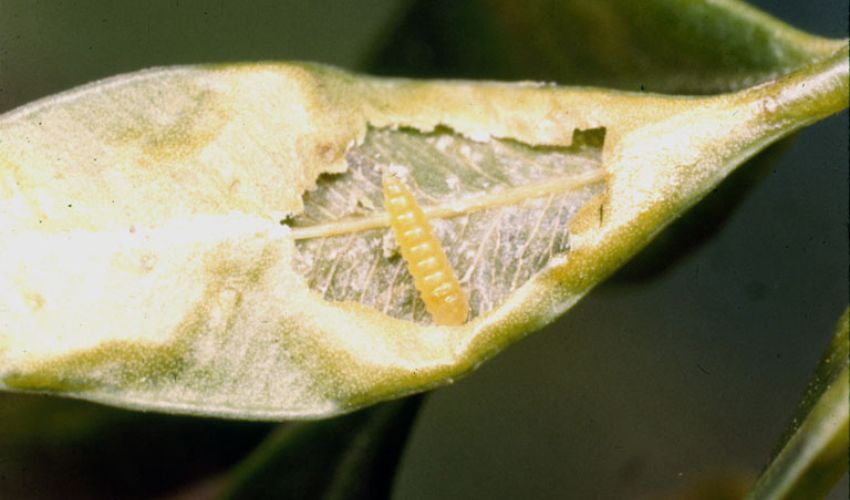
Image of leafminer larvae courtesy of Clemson University – USDA Cooperative Extension Slide Series, Bugwood.org
What Does Boxwood Leafminer Damage Look Like?
When the larvae are fully developed, nearly transparent windows appear on the underside of the leaves, where up to six larvae can be found in a single leaf.
The early signs of boxwood leafminer infestations include brown and yellow spots on the leaves, which develop into “blisters” as the larvae feed between the leaf layers.
Infested leaves can also be identified by their yellow color. Additionally, infested leaves are typically smaller than healthy leaves.
Since the damage creates a physical separation between leaf layers, transporting nutrients and fluids is disrupted, and photosynthesis is limited. This results in premature leaf drop of the boxwood shrubs.
How to Control Boxwood Leafminers
You probably want to know how to get rid of boxwood leafminers and what the best treatment for them is. These leafminers may be a severe threat to the boxwood shrubs, but with diligence, we can use four different methods to control them.
Cultural Controls of the Boxwood Leafminer
Healthy plants are less susceptible to attack, so proper fertilization and watering can help your boxwoods fight off potential pests.
Additionally, there are species of boxwoods that show greater resistance to the pest than others. These include the following cultivars:
- Japonica
- Green pillow
- Franklin’s Gem
- Pendula
- Richard
- Nana
Choosing one of these resistant cultivars keeps your plants healthy and reduces the boxwood leafminer’s ability to spread.
Mechanical Controls of the Boxwood Leafminer
When you detect a leafminer infestation, you can prune affected leaves while the larvae are still in the tissue and dispose of them away from the infected shrub.
Though you can physically crush leafminers inside the leaves, this method is less practical than pruning due to the challenges in identifying all affected leaves.
Biological Control of the Boxwood Leafminer
Several bird species, including warblers, nuthatches, and chickadees, can detect leafminer larvae inside the leaf and extract the pupae; however, this can often damage the leaves worse than the leafminers themselves.
Some parasitic wasps can help control boxwood leafminers. Though these wasps aren’t commercially available, planting a mix of flowers can attract pollen-loving wasps naturally, adding another layer of protection for your boxwood shrubs.
Chemical Control of the Boxwood Leafminer
Emerging adult leafminers are most susceptible to chemical pesticides, so synchronizing chemical treatments with adult emergence is critical to controlling the pest and preventing reproduction.
Instars can be controlled with a soil drench as a systemic treatment that reduces larvae numbers in the boxwood leaves.
Preventing Boxwood Leafminers
Prevention of boxwood leafminers in NE Ohio starts with an arborist assessment. Call Independent Tree at 440-367-8920 for help identifying any pest problem.
And whether you need pruning in Auburn or tree removal in Pepper Pike, our arborist will evaluate the situation and recommend the best course of action to keep your trees and shrubs healthy and pest free.
Need Help with a Pest Issue?
If you suspect a boxwood leafminer infestation, contact Independent Tree to schedule an inspection. We can confirm the presence of leafminers or other pest issues and help you plan the next steps.Recent Articles
Topics
About The Author

STAY IN THE LOOP
WITH OUR
LATEST UPDATES
"*" indicates required fields

